Road trip through wintery Iceland
Earthy colours and bizarre patterns define the landscape that is as inhospitable as it is fairytale-like. A subtle ripple adorns the peaceful water of the sea, while mustard yellow and moss green headlands come ever closer. Soon it is time: we have landed on planet Iceland.
Land of superlatives
Land of Fire and Ice. And of desolate landscapes, powerful waterfalls and jet-black beaches. Iceland is the second largest island in Europe after the United Kingdom, about three times the size of the Netherlands. It is the westernmost and least populated country with a population of just 350,000 people, more than half of whom live in the capital Reykjavik. On a global scale, Iceland has the lowest crime rates and the highest number of music groups. It is the only country that makes extensive use of geothermal energy to provide households, industries and entire cities with electricity and heat.
A unique country, not least because of the exceptional natural phenomena that give visitors the feeling that they have landed on another planet. It is therefore not surprising that Iceland has become an extremely popular destination in recent years. Every summer, thousands of tourists from all over the world descend on this unique island, but what is it like in the winter? We discovered this during our road trip along the famous Ring Road.
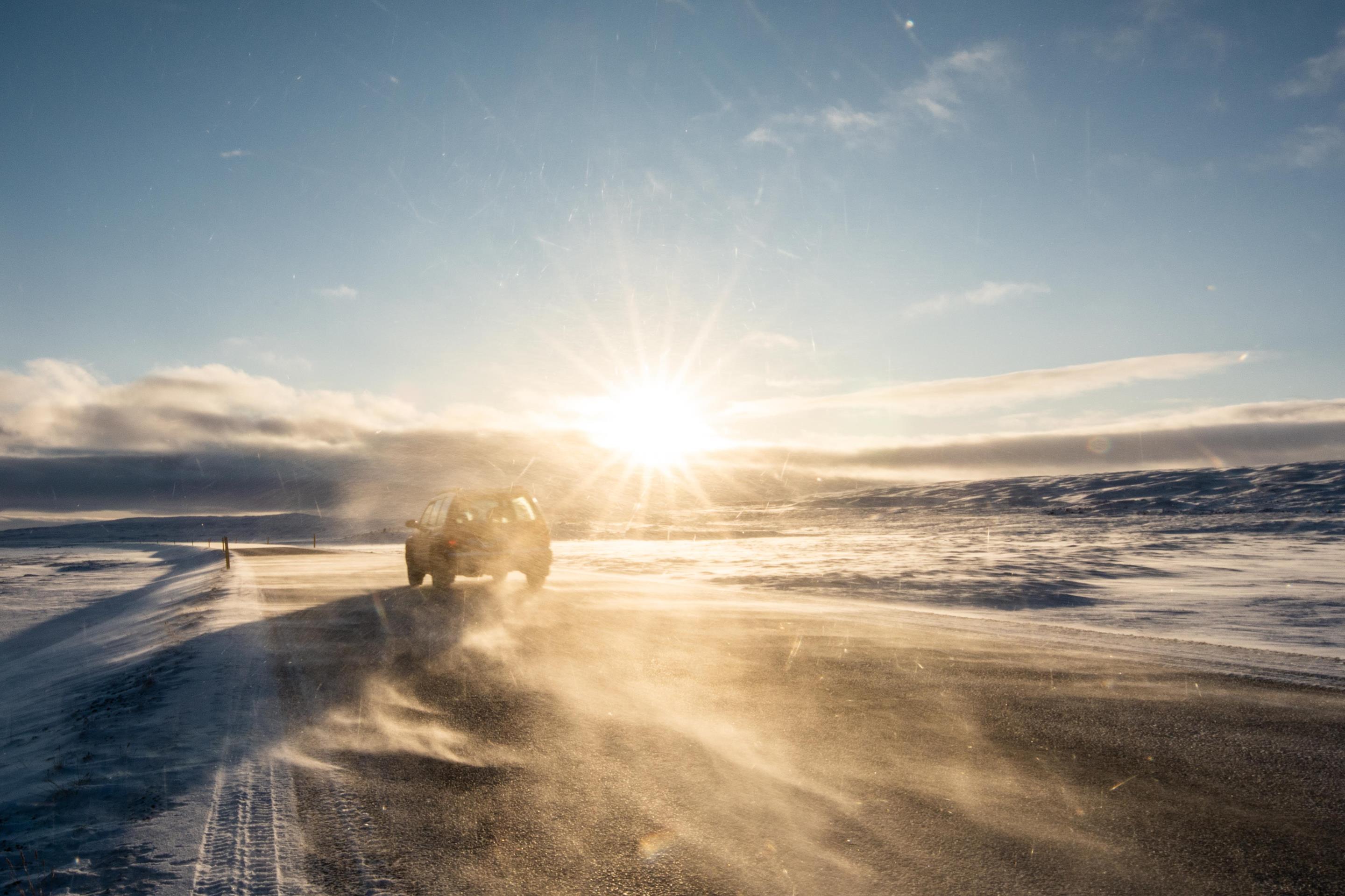
Storm(run) in the Golden Circle
The weather forecast does not predict anything good: a storm is moving across the south and southwest of the country and promises gusts of up to 130 kilometers per hour. That is enough to blow children over and adults will also have trouble standing upright.
On the edge of the Kerið crater we notice how the wind has increased in strength since we left the hotel, a harbinger of the storm that is approaching. The deep red color of the earth combined with the fluffy, almost neon green moss, give the landscape an otherworldly touch. The ice formation on the lake masks the bright blue color that we had expected, although the view is no less than the classic, sunny picture.
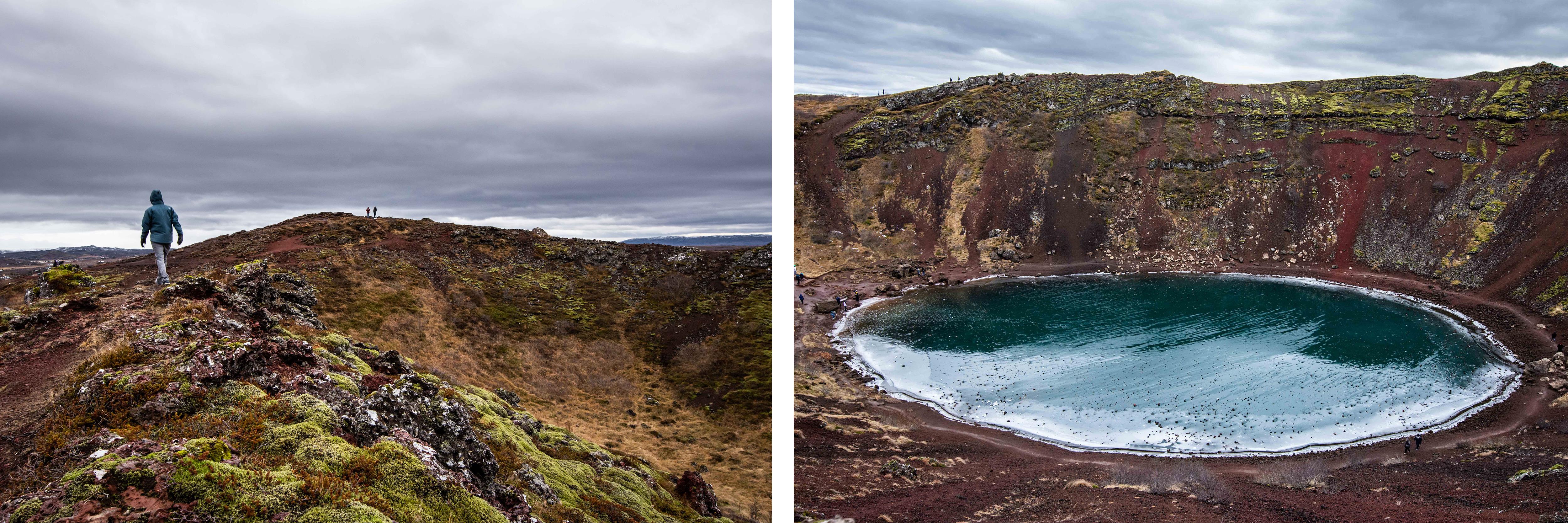 Bizar mooie kleuren bij het Kerið kratermeer.
Bizar mooie kleuren bij het Kerið kratermeer.Traveling during the low season has its advantages: fewer tourists and therefore cheaper accommodation and flights. This is also the case in Iceland, although the popular southwest, better known as the Golden Circle, is still very busy during the winter. For example, cars and full tourist buses drive back and forth to the famous waterfalls Seljalandsfoss and Skógafoss. A visit to these highlights is always accompanied by at least a few dozen tourists who are busy taking photos or, more often, taking selfies. I wonder if there are still times when you can have places like this to yourself.
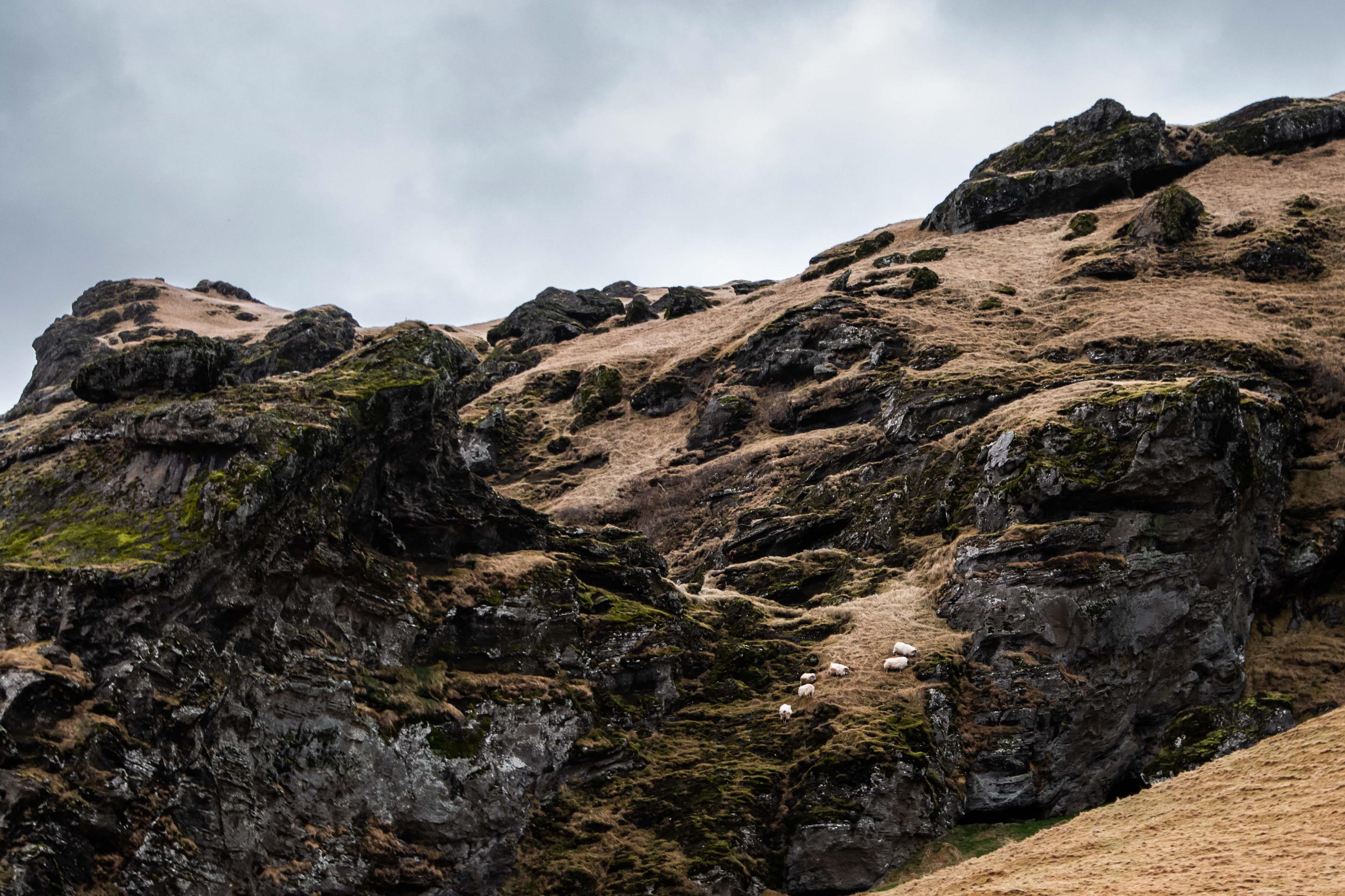
The steel staircase that leads us to the highest point of Skógafoss, sixty metres high, shakes as we are hit by one gust of wind after another. I look down between the steps, cling to the railing and bury my face deep in my collar. Every encounter with an oncoming driver turns into a game of non-verbal power play: who will step aside for whom? Who is prepared to briefly place their fate in the hands of an unpredictable force, at the risk of ridiculous or even painful fumbling? More than once I give in and try my most pitiful puppy look. Quite convincing, it turns out, especially in combination with that annoying runny nose. Once at the top, we see and hear much more of the gigantic amount of water that thunders down here every second. On the other side of the mountain, a handful of sheep are grazing, their long hair fluttering rhythmically and almost glamorously in the wind.
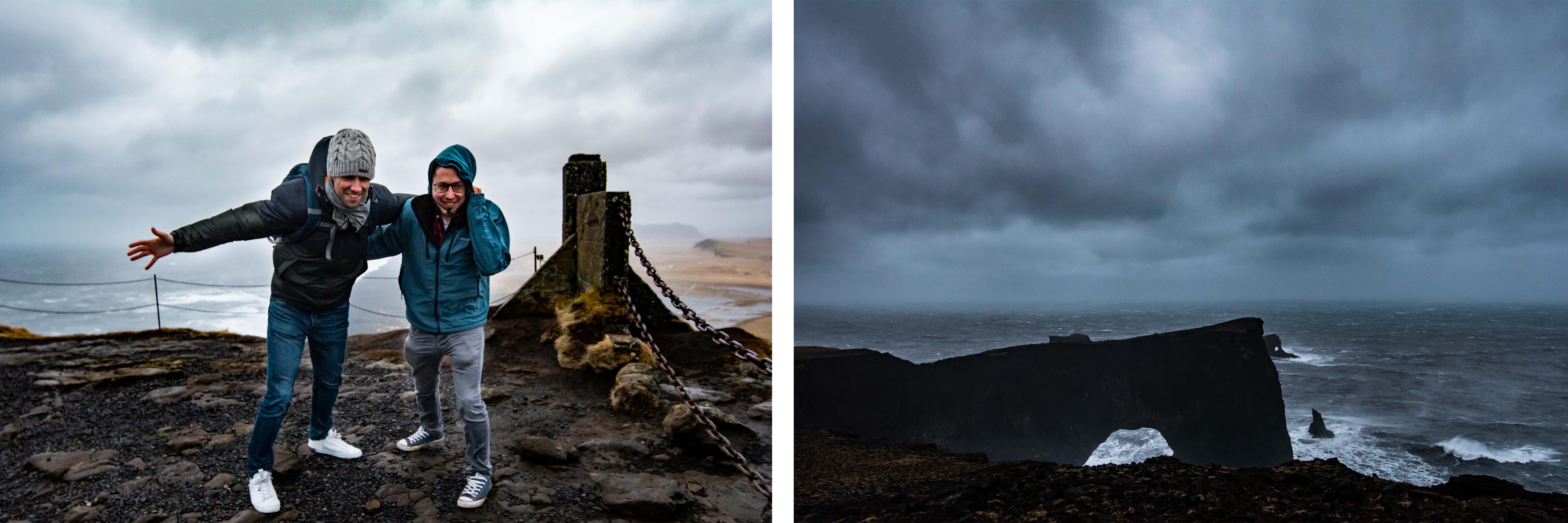
The battle against the elements takes on outrageous proportions at Dyrholaey Arch, a 100-metre-high promontory jutting out into the sea. We park within walking distance of the lookout and see other travellers walking diagonally into the pounding wind. Car doors open with difficulty, while others peer desperately out of the windows. We decide to take the risk and soon understand why others give up after a few minutes. My backpack flies off my shoulder, my hat off my head, and my whole body is pushed downwind. As if an invisible hand is giving a hard push and confusing my feet, that is how the short walk to the lookout goes.
The wind intrudes brutally into my nose. Leaning against the invisible, capricious hand, I inch closer to the railing to photograph the surroundings; at the same time, my partner holds me so that I don’t get blown away. It’s getting dark and it’s impossible to keep the camera still. But honestly, I enjoy it. Being subject to the power of nature, while admiring that same nature for all its beauty, isn’t that brilliant?
Extraterrestrial
Fifty shades of ominous grey in the sky and in front of us a black beach with diamonds of ice in all shapes and sizes. We are in Jökulsárlón, a place that rings a bell with many people. It is a unique spectacle: large chunks of ice break off from the glacier and float from the lake towards the sea, where they are then washed up on the beach by the waves. Only the aqua blue colour in the ice floes reveals that we have not ended up in a black and white film.
Once past the Golden Circle, we have the island to ourselves, or so it seems. Cliffs rising steeply from the sea, rugged mountains, deep blue lagoons, jet-black beaches, dramatic skies and fewer spectators to share it all with. I enjoy being on the road. A road trip through Iceland is healing: a feast for the eyes and a blessing for the soul.
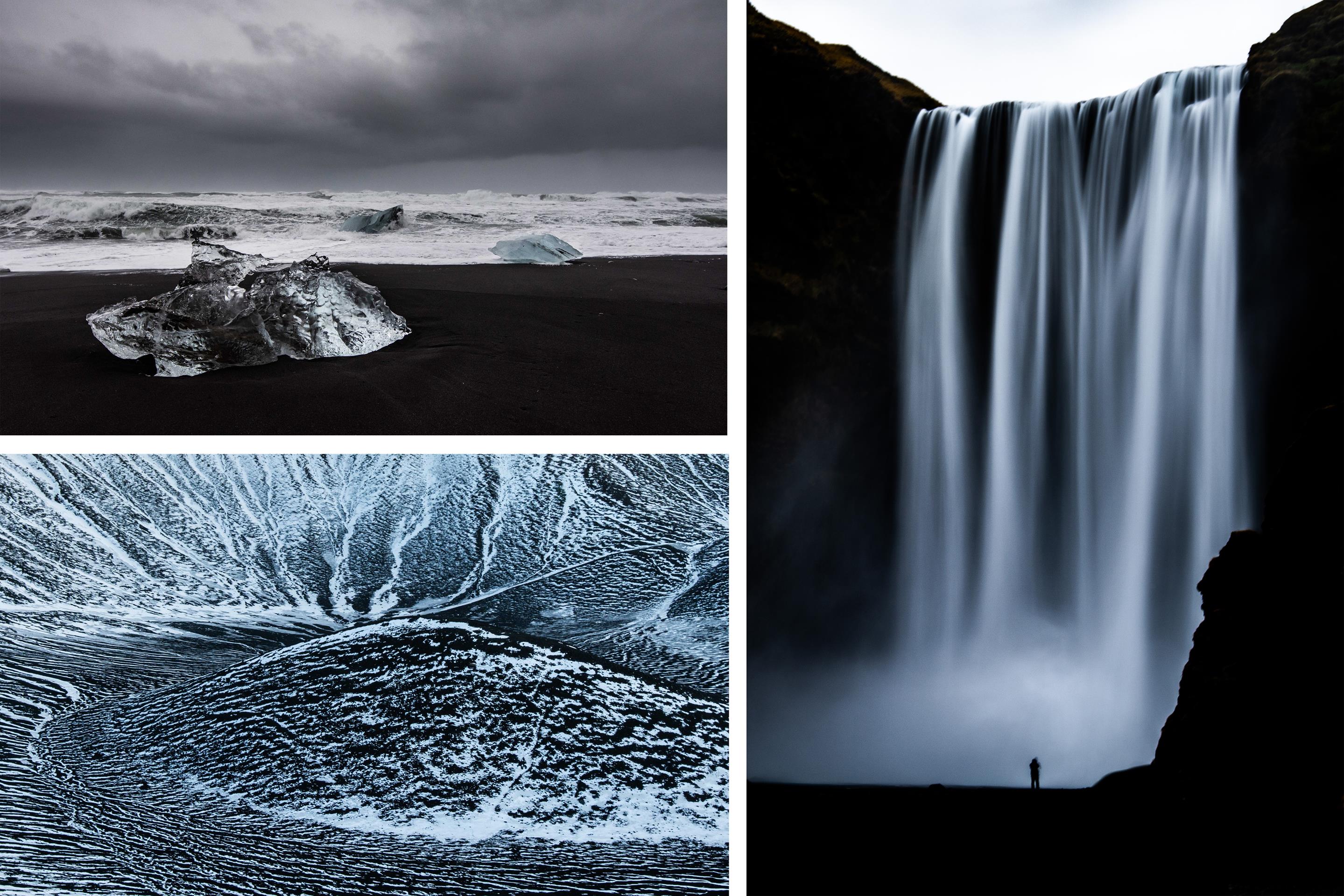
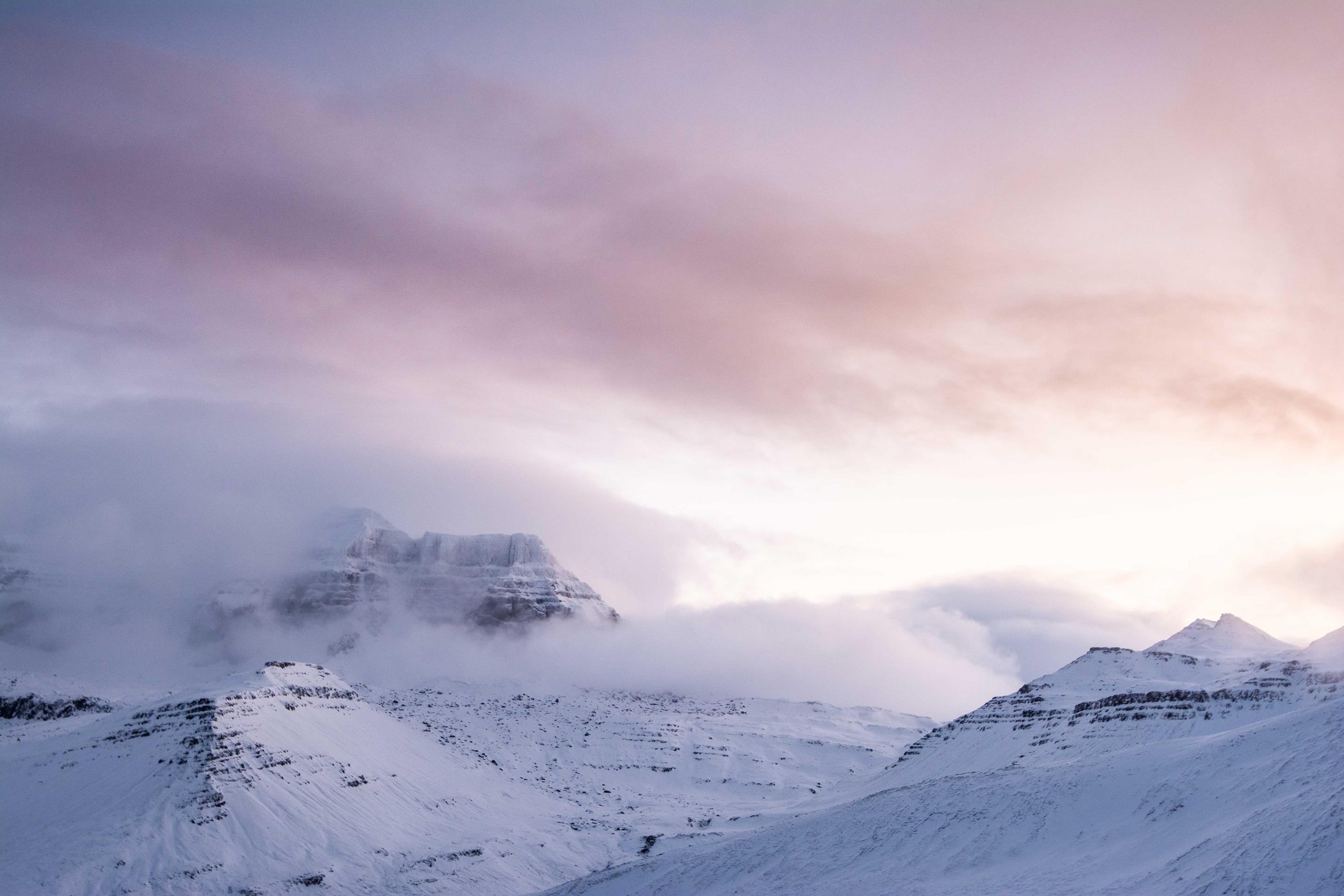
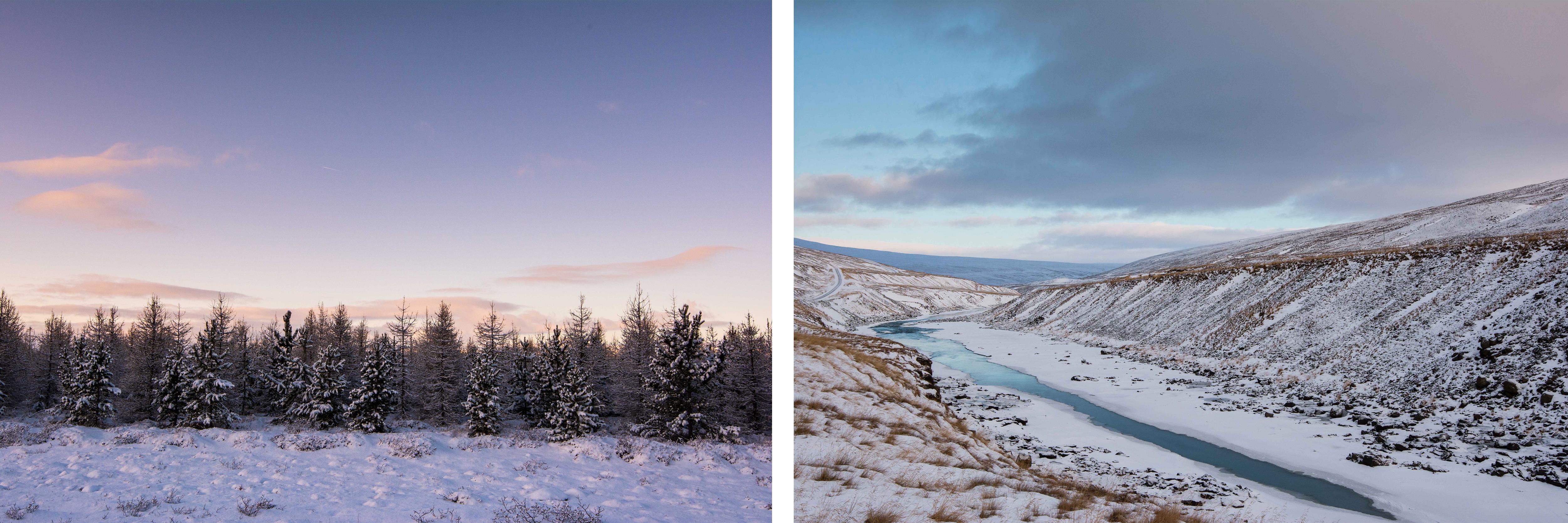
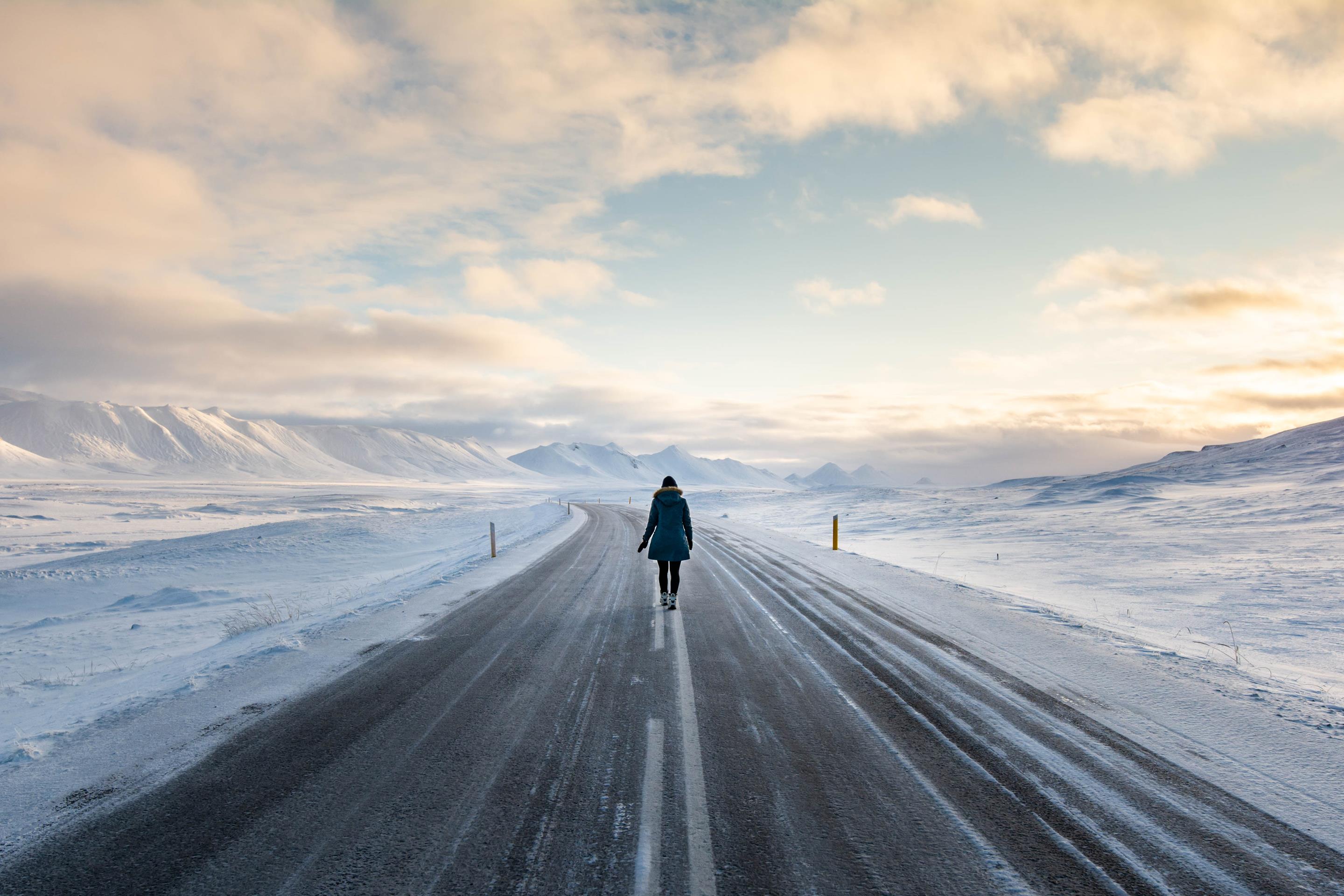
Winter in Iceland: to go or not to go?
Harsh weather, closed roads, inaccessible sights: none of this speaks in favor of a winter road trip. However, it is perfectly possible to travel through Iceland in the least obvious season, and not be dependent on tour buses that leave Reykjavik daily.
With a flexible attitude and sufficient preparation, you can create fantastic memories of your Icelandic winter jab.
1. Be aware that the weather can throw a spanner in the works, even more so: assume the worst case scenario and think of possible alternatives. Given the lower number of tourists, hotels have more space and there is a good chance that you can stay longer if necessary. Follow the weather forecast daily via https://en.vedur.is/ and the accessibility of the roads via http://www.road.is/ .
2. Use common sense. Lesser-known attractions have fewer or even no facilities such as paved trails, snow removal, stairs or supervision. Don't have crampons or an ice axe? Do yourself a favor and don't go down that canyon, no matter how much you've been looking forward to it.
3. Book your accommodation in the east and other more remote places in advance. Many small-scale lodges and guesthouses close their doors during the low season and driving quickly to the next inhabited place is not always possible due to slippery roads.
4. Pop into your local supermarket so that you always have food and drinks on hand in case of emergency. Being cold is one thing. Add hunger to that and even the happiest person on earth degenerates into an obnoxious piece of grump.
5. Rent a 4x4 with studded tires. The ring road is mostly in good condition, but when there is freezing snow or a trip on unpaved roads, you will be glad you spent a little more.
6. Go beyond the Golden Circle! This also applies to summer travel. You will get to know Iceland's unique character much better beyond the well-known attractions and the mass tourism they bring about.
Embrace the changeability and unpredictability that Iceland brings. The extraordinary landscapes are thrown in for free.
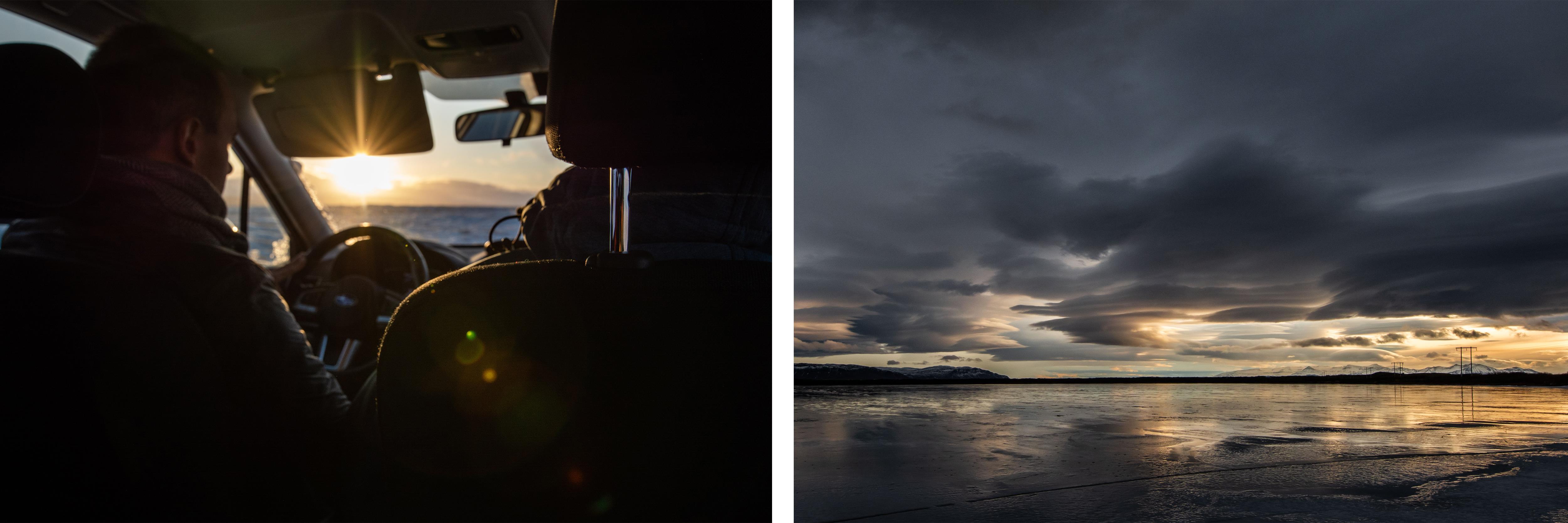
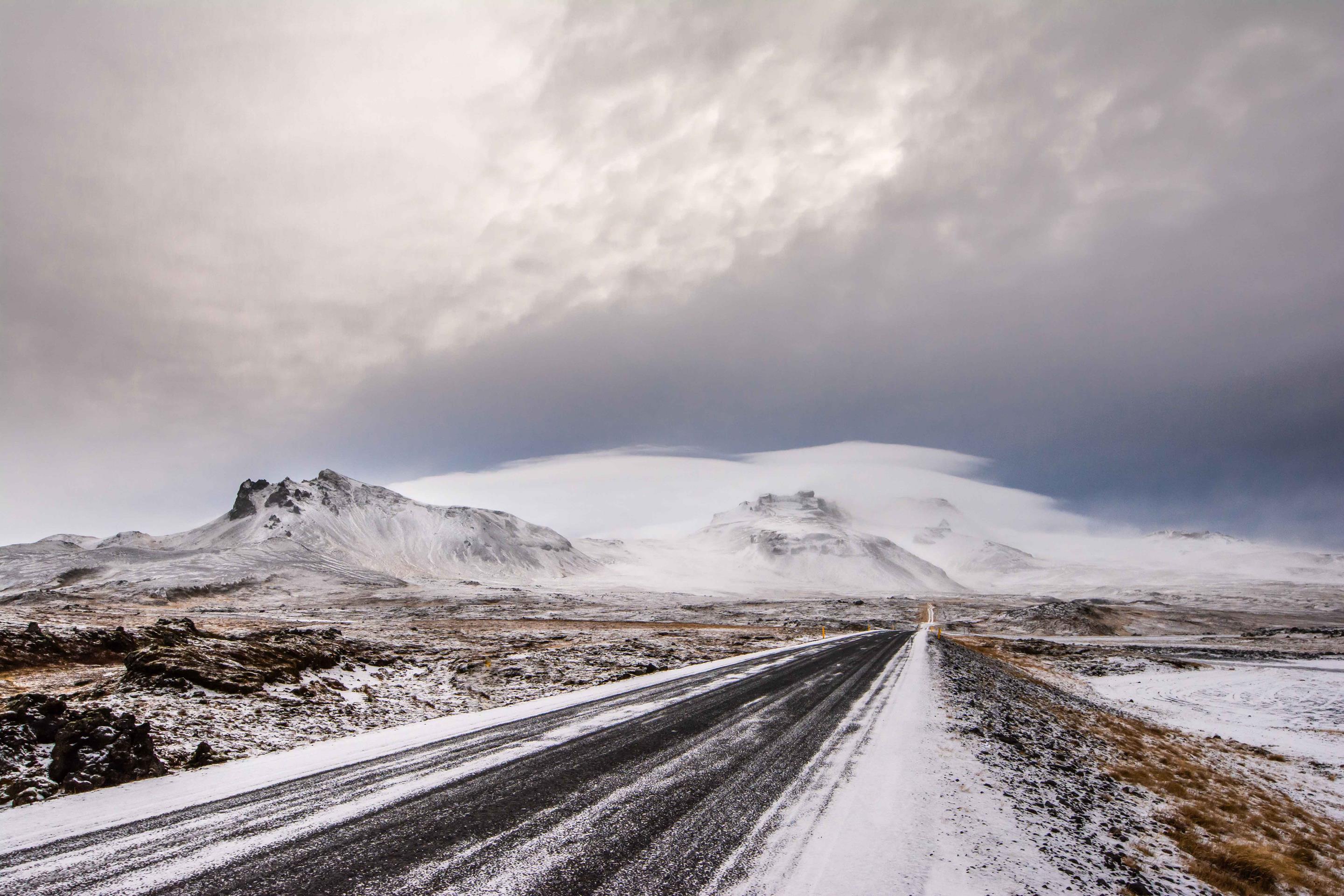
Create your own blog
Easily add stories to your diary in our online editor or app
Add your images and choose your pages layouts
Share your journey in real time without the fuss!